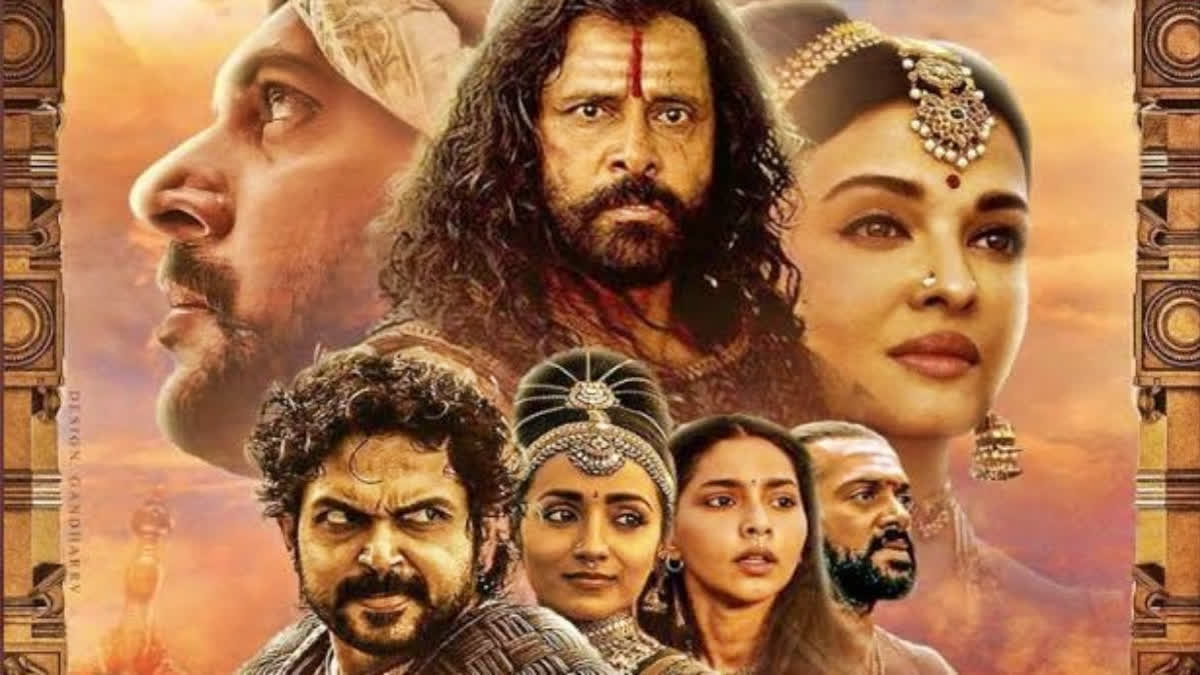Chennai: Eulogising the past continues to be a hallmark of the Tamils and the political narrative of the Dravidian heartland. Of late, testifying to it is the public discourse around Mani Ratnam's magnum opus, 'Ponniyin Selvan', the second part of which was released on Friday. No other period movie had received such intense discussion online and in drawing rooms. For, the Cholas continue to captivate the Tamil mindscape while other rulers of the ancient Tamil country pale into insignificance in comparison.
The multi-starrer movie, an adaptation of the acclaimed five-volume novel of Kalki R Krishnamurthy, is a dream project, which had proved elusive for even the iconic MG Ramachandran (MGR) and versatile actor Kamal Hassan. An ambitious attempt to render justice to the expansively wide canvas of Kalki's hugely popular fictional work laced with history, both parts 1 and 2 revolve around the succession to the Chola throne and the assassination of the crown prince, Aditha Karikalan, elder brother of Arulmozhi Varman, who later assumed the name Raja Raja.
It was emperor Raja Raja, who established the first empire of the Tamil country, bringing under his reign most of South India and Sri Lanka. His son, Rajendra Chola, expanded the later-day Chola dynasty up to the Gangetic plains and with his naval might conquered South East Asia.
Also read: Ponniyin Selvan 2 box office collection: Here's how much Mani Ratnam's film rakes in on Day 1
Under the Cholas, peninsular India had political stability and rapid expansion of agriculture and trade. They built marvelous temples besides being great patrons of art and literature. The big temple in Thanjavur, their capital, an architectural marvel in granite is a UNESCO heritage site. It is no surprise that many historians describe it as a golden era and as such appropriation of the Cholas and not only the Tamil nationalists and Dravidian parties, which vie for appropriating the Chola pride, even the right wing is not lagging behind.
Without a doubt, the movie has revived interest in the Cholas of the 10th century. After the release of PS-1, the Tamil Nadu government of MK Stalin announced a Chola tourism circuit, covering the temples and the massive 11.2 km long Veeranam Lake, an example of their exemplary water management. Furthermore, it has proposed to construct a Chola-era museum in Thanjavur to preserve exquisite bronze statues as well as other artefacts. But, long before the BJP-led Union government christened the Eastern Naval Command at Visakhapatnam after Rajendra Chola. During his reign, the Bay of Bengal was no more than a Chola lake! According to eminent historian Romila Thapar, in military might the Chola navy was the most efficient and lethal one till the British arrived on the scene later on.
It is very common among Tamils to have names such as Raja Rajan, Arulmozhi Varman, Rajendran, Karikalan and Ponni. The DMK had hailed the late patriarch as a 'Chola' akin to Raja Raja for dredging and restoring the canals in the Cauvery Delta and for holding the World Classical Tamil Conference.
Across the Palk Straits, the now decimated Liberation Tigers of Tamil Eelam (LTTE), who had fought for an independent Tamil homeland in Sri Lanka, had in their name and on their flag, the 'Tiger', which is the royal emblem of the Cholas. In Tamil Nadu many political outfits have the 'Tiger' suffix.
Also read: Mani Ratnam's Ponniyin Selvan 2 box office prediction; all eyes on pan-India collection
What does this signify and why the pride of the past continues to captivate? “In the Dravidian and Tamil nationalist political narrative, the pride about the Tamil past, which precedes every other race, holds an important place. The past is made a tool for political and cultural identity to prove distinctiveness. This happens when history is constructed to suit a purpose. More so, when a pan-Indian political narrative denies or attempts to subsume regional identities. Furthermore, the medieval Cholas were the first empire of the Tamils by the Tamils and their reign agriculture and water management, trade and commerce flourished, magnificent temples were built and there was a literary renaissance,” explains R Thirunavukkarasu, teaching at the Central University of Hyderabad.
Explaining further, he said, “Even Kalki had presented history as a commodity to be consumed so that the reader gets a sense of exhilaration by identifying and associating with it. But, instead of getting stuck, we have to move beyond.”
Yet, despite the recent critical works, by Po Velsamy and others about the Chola era when the caste system got entrenched and settlements for Brahmins from the north were carved out with land grants besides the Devadasi system in temples, that part of the hoary past remains etched in memory, mesmerising the present. Well, is that the burden of the past?



